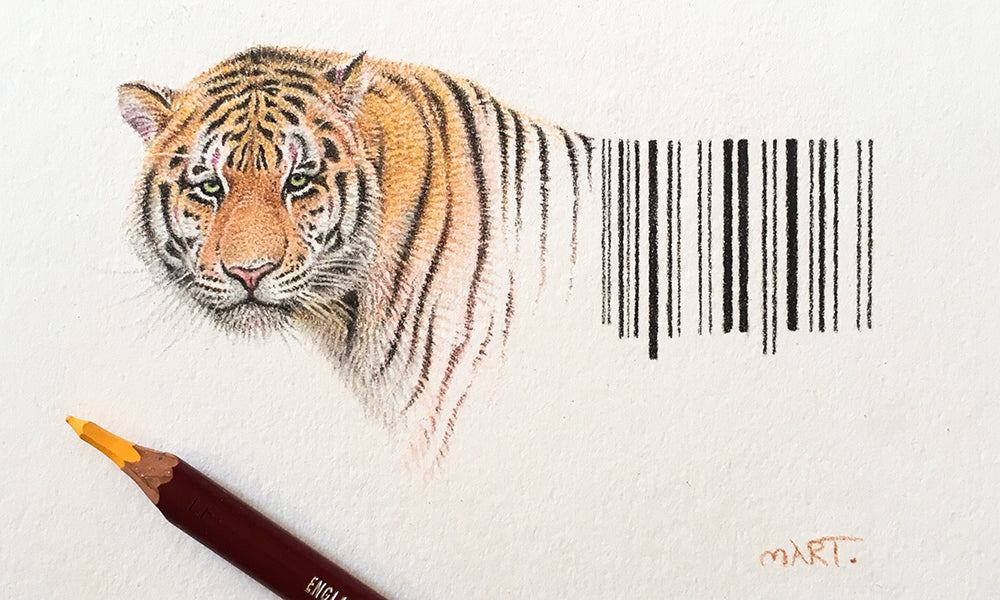I was already a decade into my career as a wildlife artist when I first asked myself the question, “is wildlife art really working for wildlife?”
I had reached a stage where I was no longer feeling satisfied with the work I was producing. I was happy from a technical standpoint, but I felt that my drawings had little meaning. if anything they were only helping to pedal a false narrative about the health of our planet's wildlife. When over ninety percent of all rhinos disappear in just one human lifetime, for no other reason than to give some wealthy people a false sense of virility and status, shouldn’t we perhaps be focusing more on that detail?
 I feel that when art only ever celebrates the beauty of wildlfie it is a bit like only posting about the good times on social media. It fails to acknowledge the suffering,, which is a big part of the wildlife narrative and a motivation for us to help. Our brains can process images a lot faster than text, so if the goal is to effectively communicate wildlife conservation issues, surely those stories are best told within the artwork itself?
I feel that when art only ever celebrates the beauty of wildlfie it is a bit like only posting about the good times on social media. It fails to acknowledge the suffering,, which is a big part of the wildlife narrative and a motivation for us to help. Our brains can process images a lot faster than text, so if the goal is to effectively communicate wildlife conservation issues, surely those stories are best told within the artwork itself?
Artivism draws on elements of fantasy and science to help communicate a truth. A legal metaphor might have the wildlife artist playing the role of the courtroom sketch artist, documenting who is in the room, whereas the wildlife artivist is the barrister pleading the case for the accused. Animals do not have a voice and wildlife artivism provides them with one.
I once believed that beauty alone inspires and compels us to take action. This may be the case for some people, but as wildlife enthusiasts we cannot expect everyone to care as much about animals as we do. Beauty alone can create a false sense of serenity, preventing people from seeing what is really happening, especially pertinent in this 'post-truth' era we now live in. Through discussions I have had with the David Shepherd Wildlife Foundation, a new competition was established in 2019 for young creatives to share their wildlife artivism. The youth category at the DSWF ‘Wildlife Artist of the Year’ exhibition is open to artists between the ages of 16-22 years:
Through discussions I have had with the David Shepherd Wildlife Foundation, a new competition was established in 2019 for young creatives to share their wildlife artivism. The youth category at the DSWF ‘Wildlife Artist of the Year’ exhibition is open to artists between the ages of 16-22 years:
https://davidshepherd.org/wildlife-art/gallery/wildlife-artist-of-the-year-2020-human-impact/
The winner becomes the recipient of the 'Ingrid Beazley Award' - A £5,000 grant designed to help wildlife, stimulate creativity, and support young people struggling with eco-anxiety.

If you are of age and thinking about entering, you may find some useful tips in this video of the judges discussing the competition:

